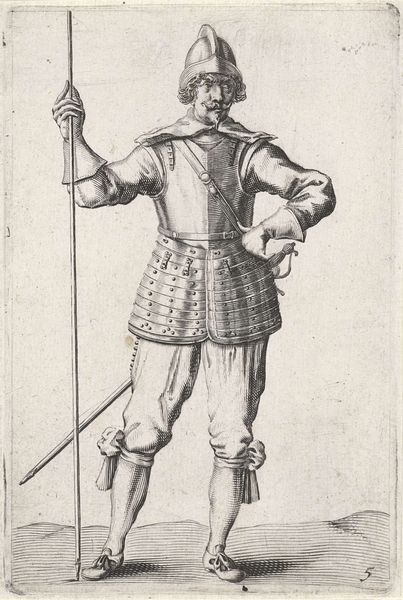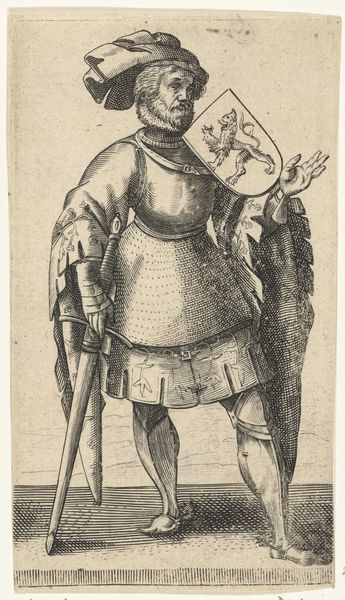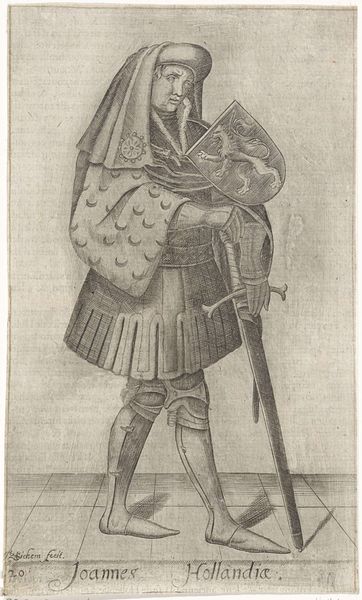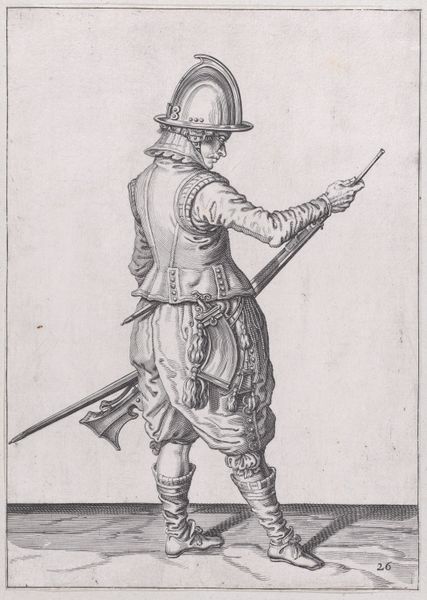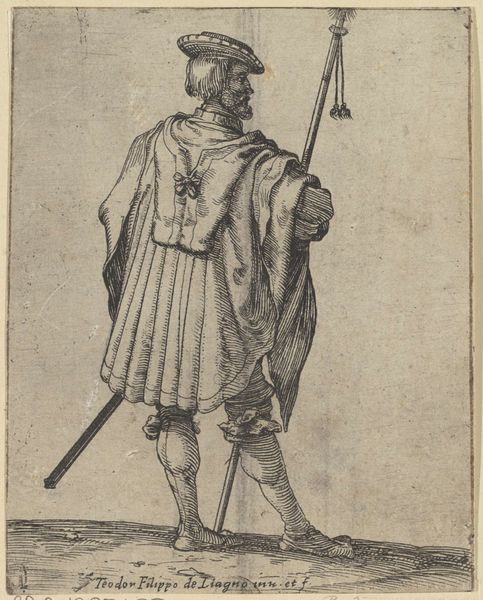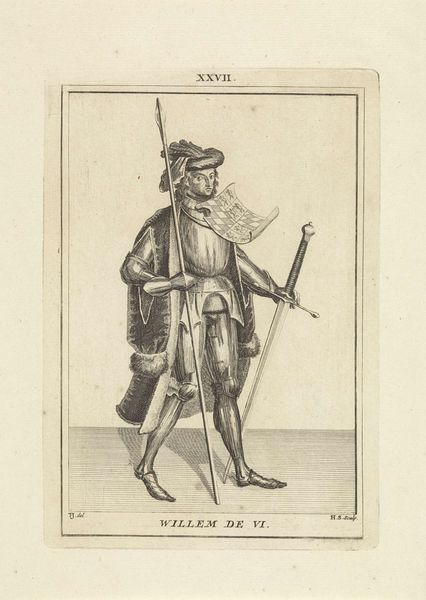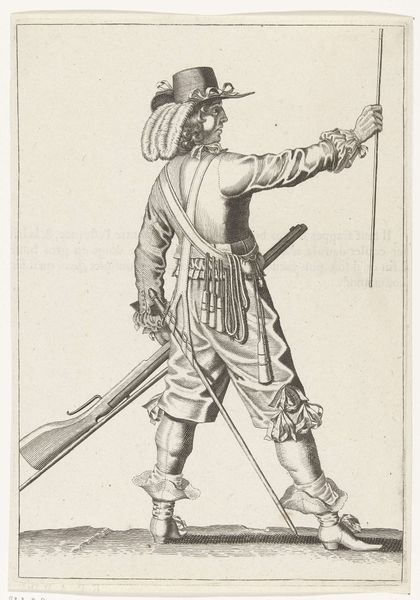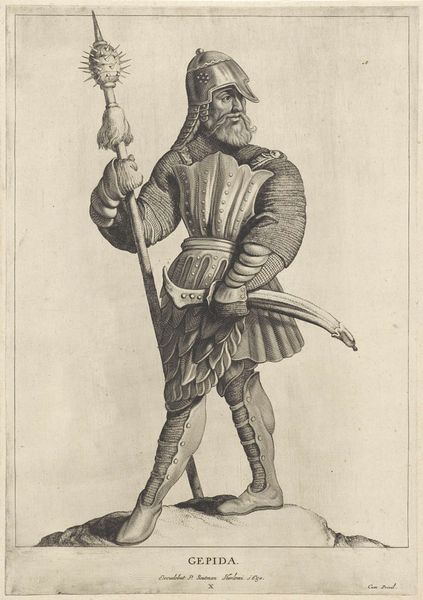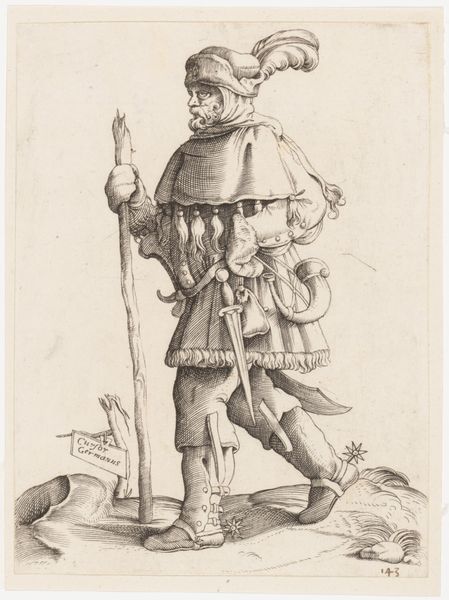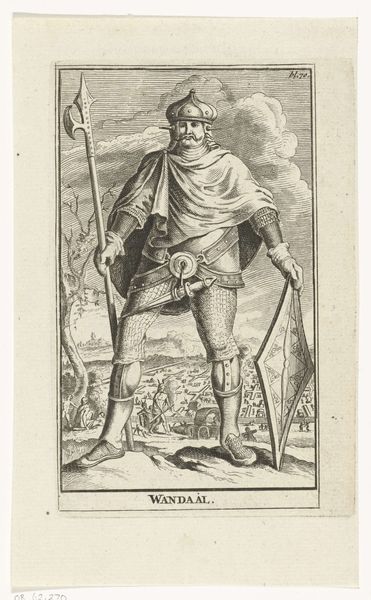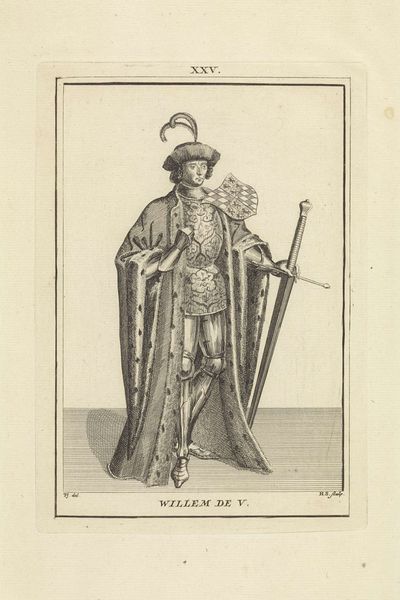
print, engraving
#
portrait
#
baroque
# print
#
figuration
#
history-painting
#
engraving
Dimensions: height 444 mm, width 312 mm
Copyright: Rijks Museum: Open Domain
Cornelis Visscher created this print, Quaden, using engraving, sometime before his death in 1658. In this period, printmaking was less a mode of artistic expression than a means of disseminating images quickly and efficiently. Visscher's skill is evident in the meticulous detail he achieves with the burin, a tool used to incise lines into a metal plate. Notice the textures, from the sheen of the armor to the fur pelt slung over the soldier's shoulder. Each of these effects required careful planning and laborious execution. Engraving was a highly skilled craft, demanding years of apprenticeship to master. The resulting prints could be sold relatively cheaply, making images accessible to a wide audience. Consider the labor involved in producing this image; from the mining and processing of the metals, to the skilled work required to transform raw materials into communicative, reproducible images. We can appreciate the artistry and craft that went into creating this work. The print’s primary purpose was communication, a function which is all too easily overlooked when considering art history.
Comments
No comments
Be the first to comment and join the conversation on the ultimate creative platform.
